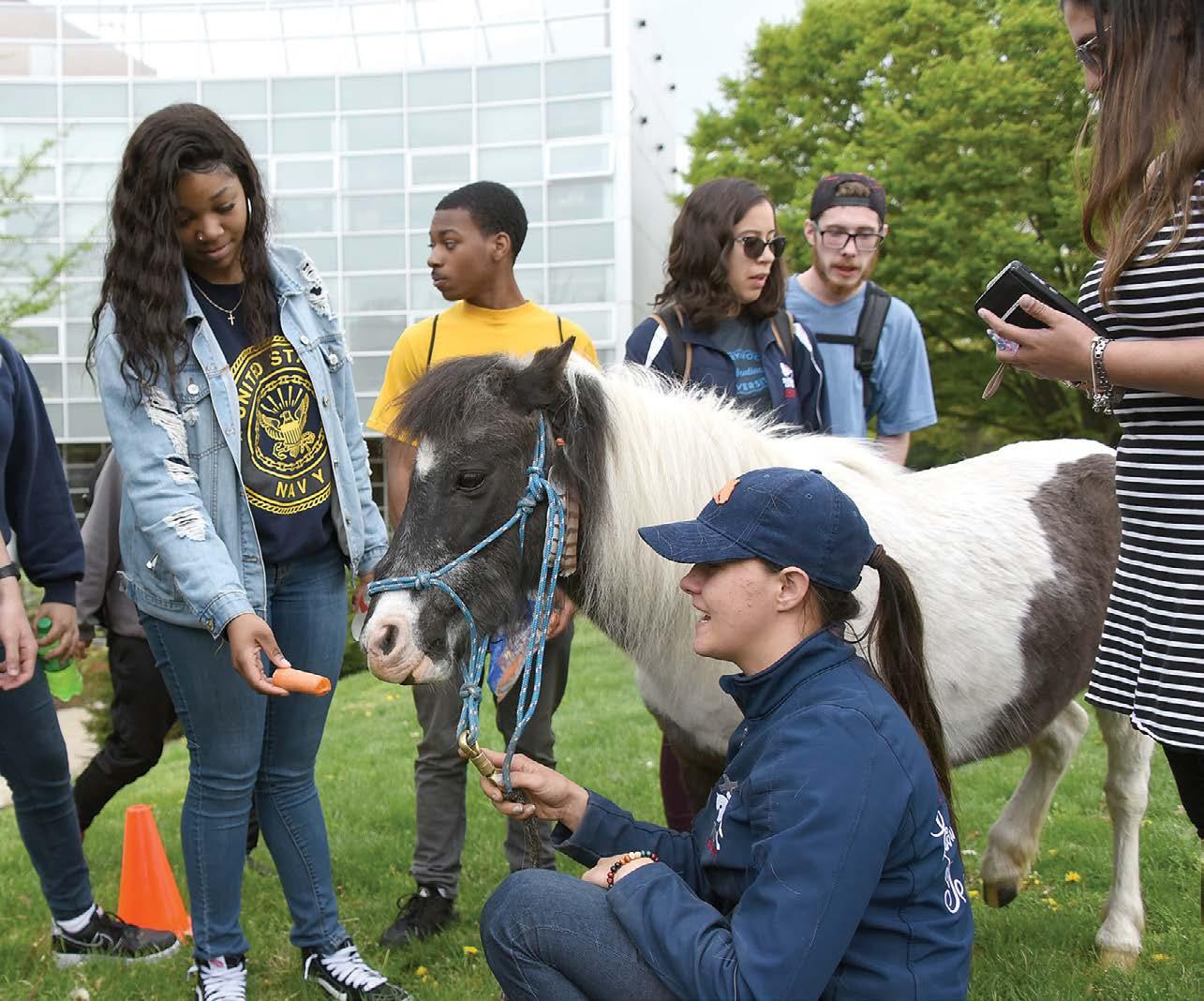
9 minute read
Recommitting to Climate Action
Earth Day Celebrates Fifty Years
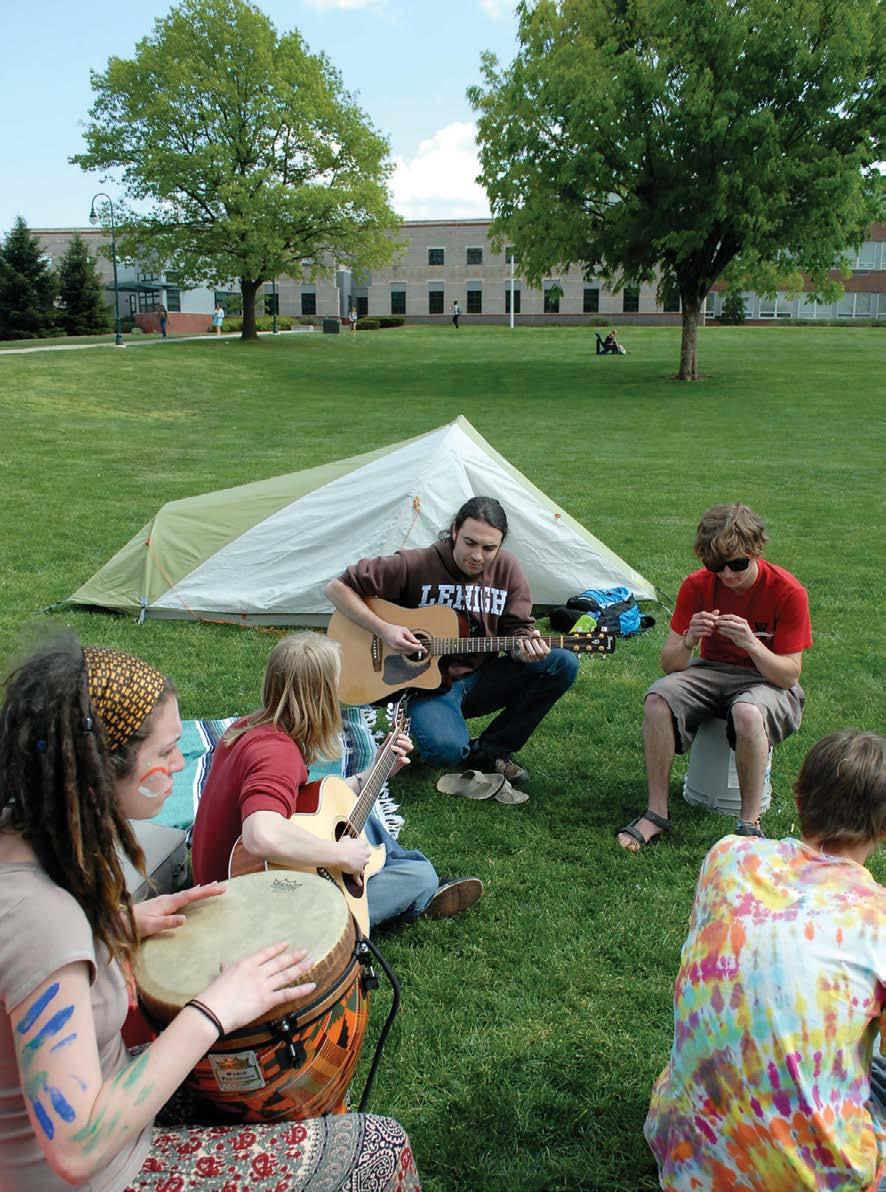
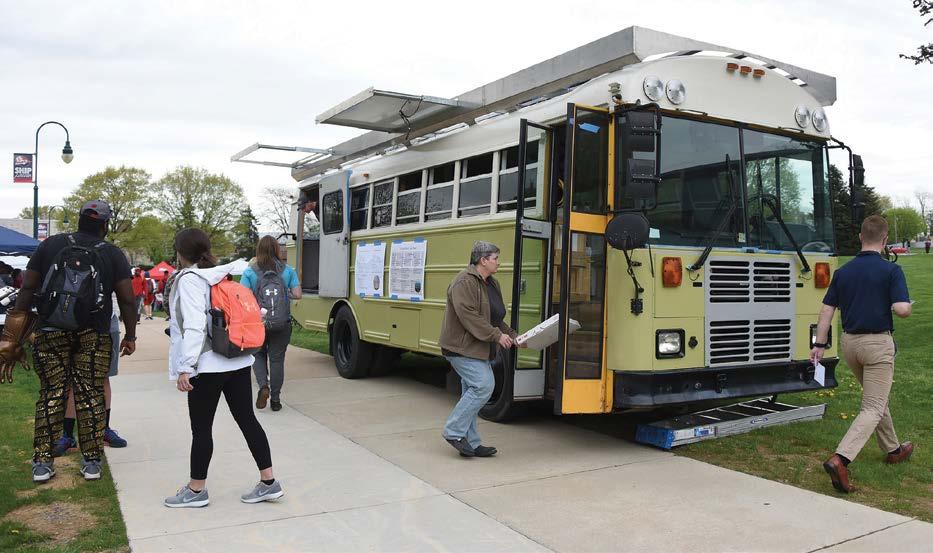
The year was 1970. Bell bottoms, crop tops, and go-go boots were in. Mustard yellow was trending. Psychedelic rock was groovy. And climate change had peaked as a public concern. l This spring marks fifty years since the birth of an environmental movement across college campuses and the nation as a whole. The connection between pollution and public health had become abundantly clear, as battles against oil spills, toxic waste, freeways, pesticides, and more came to the forefront.
To capitalize on the energy of the student anti-war movement, US Senator Gaylord Nelson pitched a national teach-in day—nestled between spring break and final exams—that highlighted these growing public concerns. His gamble paid off. On April 22, 1970, 20 million Americans mobilized across the country in support of environmental change.
“My dad was a student at the University of Michigan in 1970—one of the first planners of Earth Day,” said Dr. Russ Hedberg, assistant professor of geography/earth science and sustainability coordinator. “To create that momentum set the trajectory of environmentalism. In America, it’s a day of demonstrations and teach-ins. We wanted to try to capitalize on some of that this year.”

Campuses nationwide held environmentally focused activities on the inaugural Earth Day in 1970. At Ship, students participated in film screenings and presentations, demonstrations, trips, and contests.

Shippensburg University celebrated Earth Week in 1970 with its own teach-ins, contests, demonstrations, and field trips. Although the events and activities have changed over the years, students continue to hold a week in April focused on sustainability and stewardship on campus. This year—even though the platform was different—they did so with renewed energy under the newly organized Green League, which encompasses three environmentally focused student groups.
“I wanted this year’s Earth Day to be a celebration of hope,” said Paige Steffy, a senior geoenvironmental major and Green League president. “We should remember how far we’ve come and what we can do now. We want to reinvigorate students.”
Keeping the Momentum
Fifty years ago, people united from coast to coast for rallies, demonstrations, and teach-ins that protested against and educated on our deteriorating environment. Their efforts led to major change through the formation of the United States Environmental Protection Agency and the passing of the Clean Air, Clean Water, and Endangered Species acts. This new legislation called on states and the EPA to solve environmental problems through science and technology.
Now, the international Earth Day Network strives to activate and educate a worldwide environmental movement. The initial event made great strides. In 2020, new challenges and opportunities require a renewed energy around climate action, which was the theme of Earth Day 2020.
EarthDay.org states, “As an individual, you yield real power and influence as a consumer, a voter, and a member of a community that can unite for change. Don’t underestimate your power.”
And that is exactly what the Ship community drove home during StewardSHIP Week.
“The biggest thing is awareness—what does it mean to us as a student body?” said Becky Hansen, a senior geography/earth science major and outgoing coordinator of SEAS.
Students for Environmental Action and Sustainability (SEAS), one of the organizations under Green League, is an advocating body for environmental change and sustainable practices on campus. SEAS organizes the annual StewardSHIP Week and Earth Day recognition. This was the first year that Ship celebrated Earth Day virtually. In line with state and federal guidelines, the university made the difficult decision to close campus due to the COVID-19 pandemic and resume activities through remote learning. But climate action can't take a break, so neither did Ship. The day continued in a virtual setting. Events included recorded and live talks, Earth Day challenges, at-home tips, and more. From the Geography/Earth Science Department, faculty shared videos on gardening tips, the significance of bees, container gardening, and water quality.
Another piece of the newly formed Green League is the Geography/Earth Science Organization (GESO), a group that focuses on action and stewardship more than advocacy. Although much of the work between the two groups overlaps, GESO commits to stream and trail cleanups, tree plantings, and education. The third arm of the league is the SU Farm Club.
“Last year, the decision was made to bring together these organizations under the umbrella of the Green League,” said Dr. Sean Cornell, professor of geography/ earth science. “They still have separate missions and activities. GESO is hands on, feet wet stewardship. SEAS is advocating for policies and movement.”
Under this new structure, the groups collaborate and support each other’s agenda, making the effort stronger overall. These three committees, organized into one, allow students to join to advocate, educate, and take action for environmental change.
“We want the fiftieth anniversary to be a recharge. We have to look back and look forward,” Cornell said. “We need to start teaching our students why what they do is important, why perspective matters, and how that integrates into what they do today.”
Looking Forward
Steffy started her undergraduate career at Shippensburg as a computer science major. After taking a geology class, she said, “everything opened up.”
“What really drew me to it was getting other people more involved and sharing a campus vision. That’s what I like about it—I think everyone generally has the same spirit.”
There’s no doubt that geoenvironmental and sustainability majors are passionate about the climate and environment. And Steffy and Hansen are encouraged by the positive actions of their classmates. But, Steffy said there is plenty of ground to cover, even through simple action like recycling or composting waste instead of trashing it.
“I went to the (university’s) Environmental Steering Committee and discussed how to shift things in the future,” she said. “Sustainability needs to be a reinforced theme. We forget that if we just use less in general, we do a lot of good.”
Ava Franklin, a sustainability major and incoming SEAS coordinator, aspires to fill her late grandmother’s role as an advocate for the environment. Franklin said her grandmother founded the New Hope Recycling Center and, as an avid traveler, showed great respect for the land.
“Today, we’re influenced a lot by what we see in the media and in politics. It’s a touchy subject, but students know what it means to be and live a greener lifestyle,” Franklin said.
“It requires a lot of self-awareness,” Hansen added. “As a campus, there’s a lot more we can do with our waste facilities.”
Cornell feels students are hungry for change. He takes a survey at the start of his Intro to Geology classes—a diverse gen ed—asking students to rank the topics they want to cover in class. “Students selected climate change as the No. 1 topic they want to learn about. Young people get it. I think they understand the challenges, but don’t always know how to address them.
“The goal is to give them something to work for.”
Making the Commitment
To commemorate fifty years of the inaugural Earth Day’s impactful changes, Shippensburg University made a special pledge.
On April 22, Earth Day’s anniversary, President Laurie Carter virtually pledged a climate action commitment for the university. This commitment will push the development of a climate action plan to reach carbon neutrality on campus. This effort will involve interdisciplinary curriculum and community partnerships.
“We are proud to begin our climate commitment in partnership with the South Mountain Partnership, Michaux State forest and the Pennsylvania Department of Conservation and Natural Resources,” said Carter, adding that the university is committed to assisting the region in doing the work of sustainability. “Together, we commit to taking leadership in our community, to create a more sustainable and positive future.”
The university already sets high standards for sustainable leadership. Ship is a leader among the State System universities in its efforts to consume the least energy. In 2016, a $49,000 National Science Foundation grant provided Ship with the tools to bolster its StewardSHIP Week and to carry sustainable education through interdisciplinary courses. The Center for Land Use and Sustainability tackles sustainable solutions for the community. Investments in campus infrastructure have decreased energy consumption and increased savings.


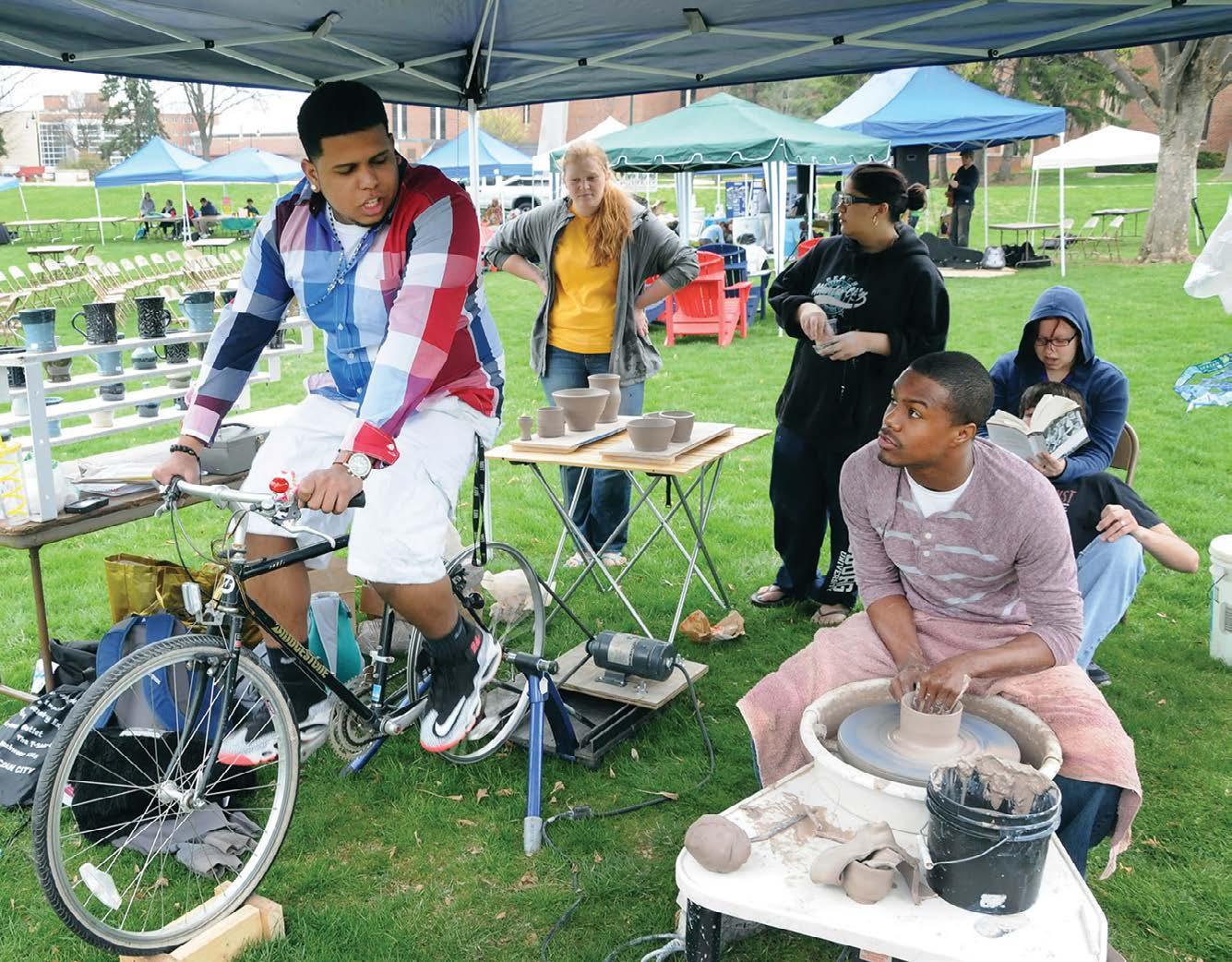
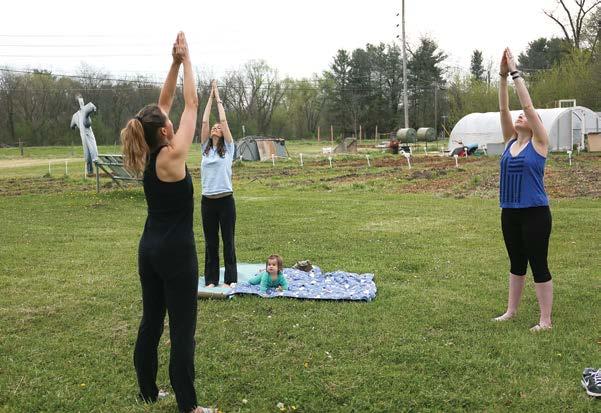
“I’m really excited to see Shippensburg make this commitment,” Hedberg said. “For the president to sign a national commitment for climate leadership will set the trajectory for carbon neutrality. We’re essentially making this pledge for another fifty years.”
Multiplying Our Efforts
The Earth Day Network is very clear— each individual’s efforts multiplied over nearly 200 countries will make a positive impact on climate action worldwide. And the Ship community is ready to do its part.
“We have to reduce, reuse, and recycle; consume less; use less fast fashion; choose your electric sources; reduce waste,” Steffy said.
Cornell added, “We have to give students hands-on projects to learn concrete ways to be more sustainable, but also do this regardless of discipline.”
There are still many obstacles to overcome, Hedberg said. Politics and the economy present some of the same and new environmental problems experienced over the last fifty years nationally and internationally.
“Sustainability has to be with everyone, we have to build solidarity,” he said. “But, if everybody stands up and yells and acts, we can make a difference. I’m optimistic about the future.”
Facts and Figures
1 billion people mobilize for Earth Day annually.
More than 190 countries participate in Earth Day.
Earth Day became a global phenomenon in 1990.
More than half of Americans agree that the president and Congress should make it a priority to focus on global climate change.
More than 40 million tons of food waste was generated in 2017.
From 1995 to 2015, residential water use decreased in thirty-five states, and Washington, DC, had the most drastic reduction, decreasing residential water use by 61 percent.
Sixty-eight percent of Americans believe the federal government isn’t doing enough to protect the water quality of lakes, rivers, and streams.
Sixty-seven percent of Americans want the federal government to do more to improve air quality and reduce the effects of global climate change.
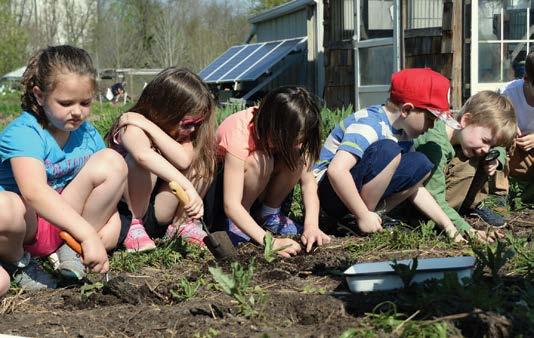
This is the year to recommit to climate action. In April, the campus celebrated, educated, and advocated for climate action during its annual StewardSHIP week through a new virtual setting.
(according to EarthDay.org and PewResearch.org)

